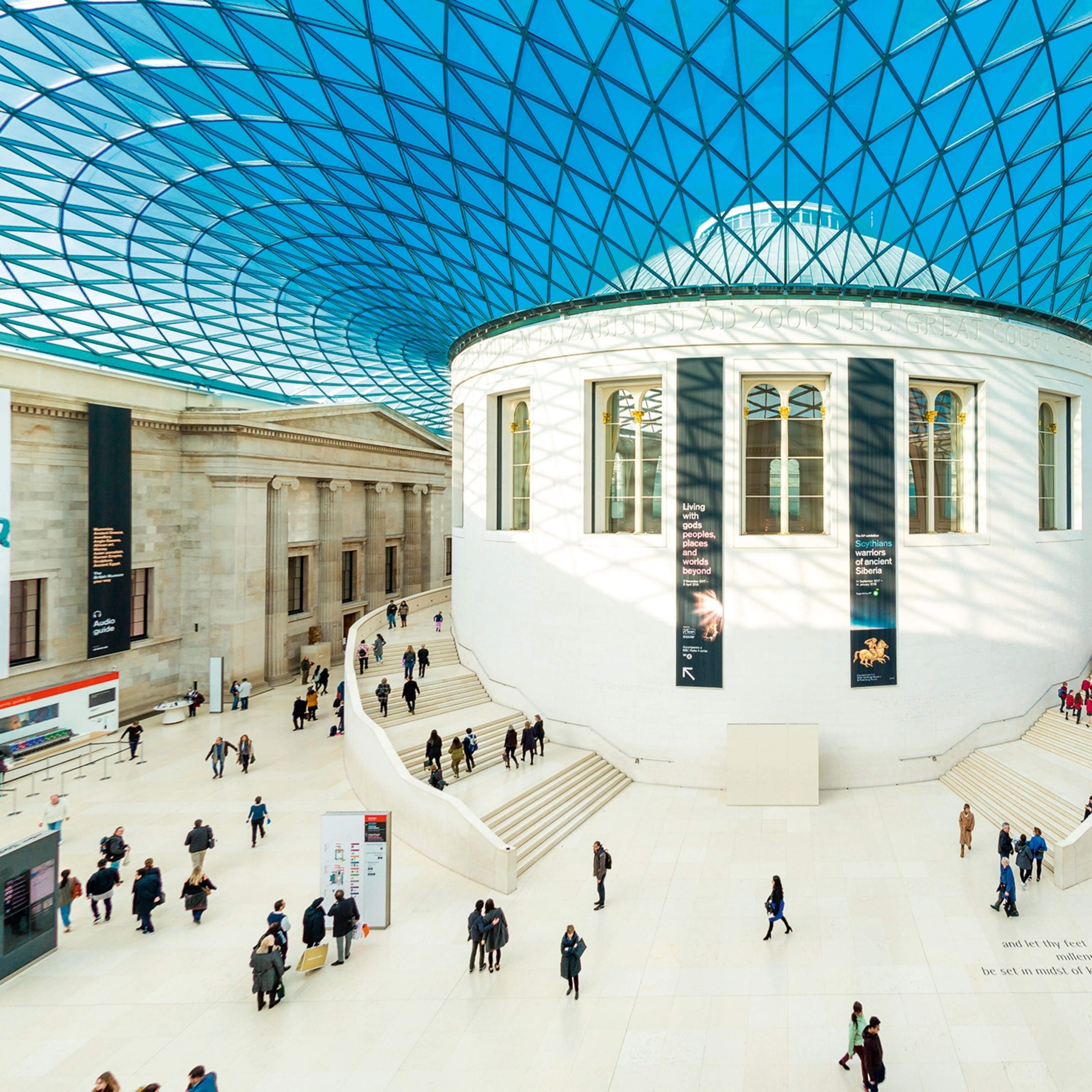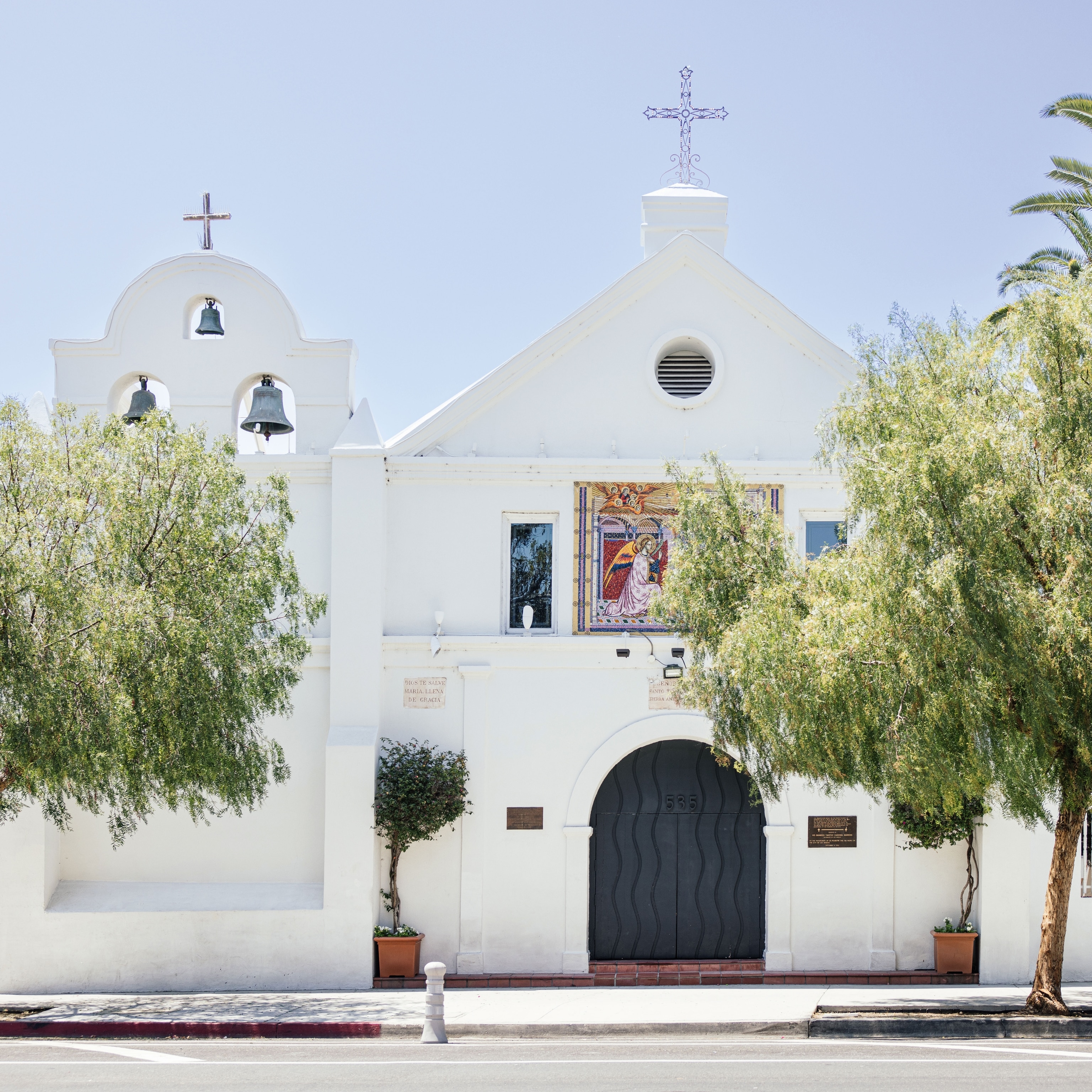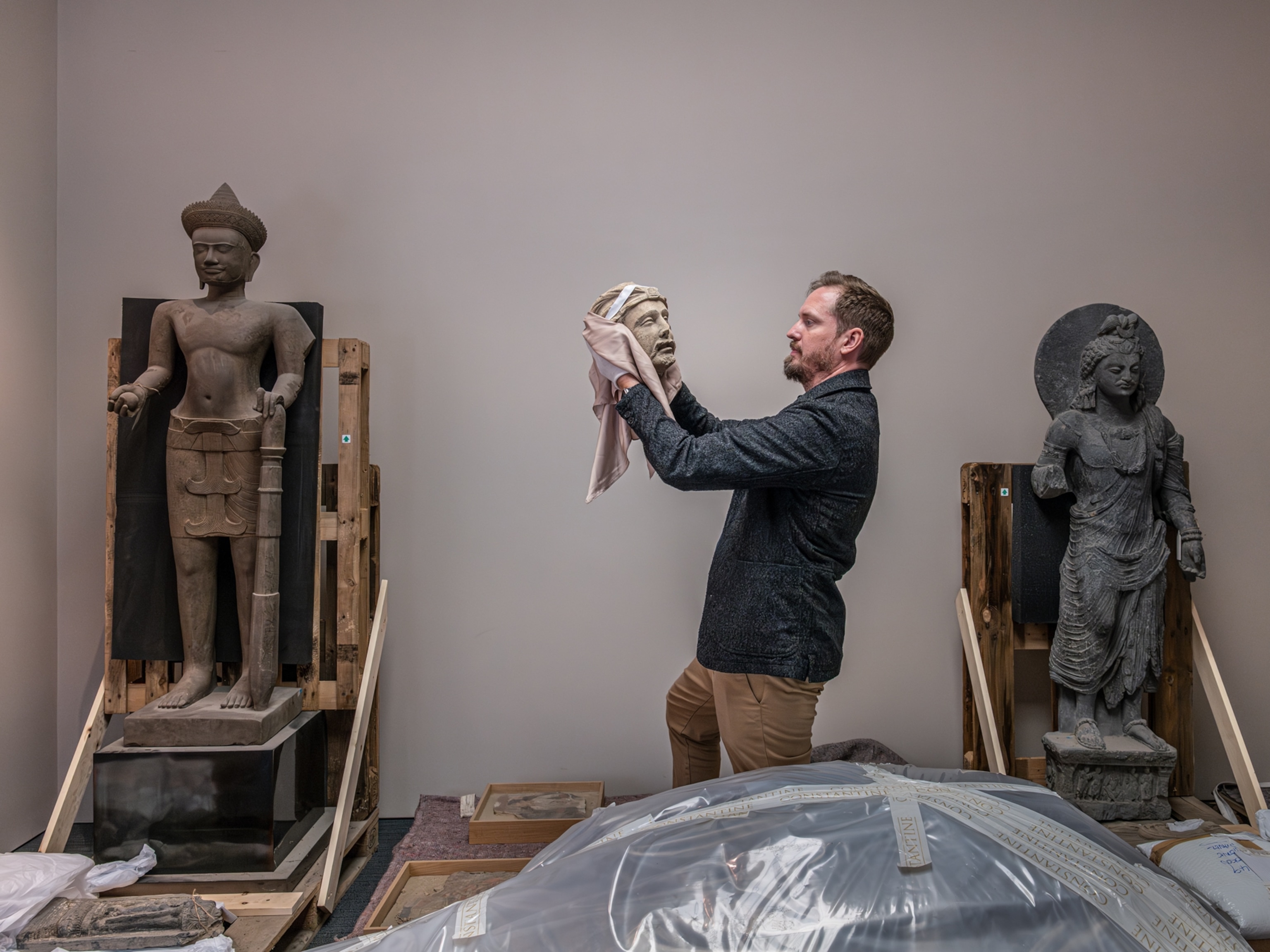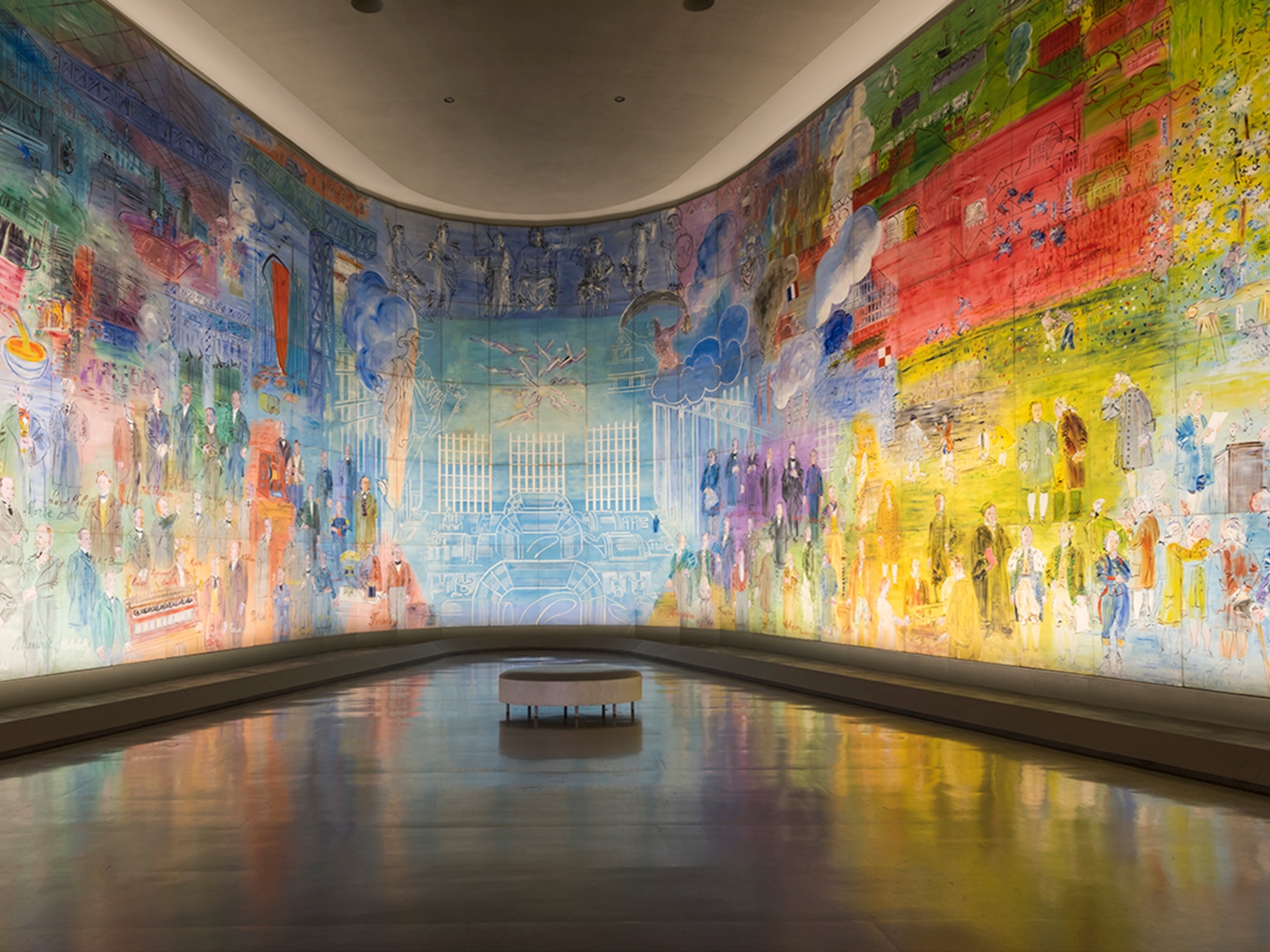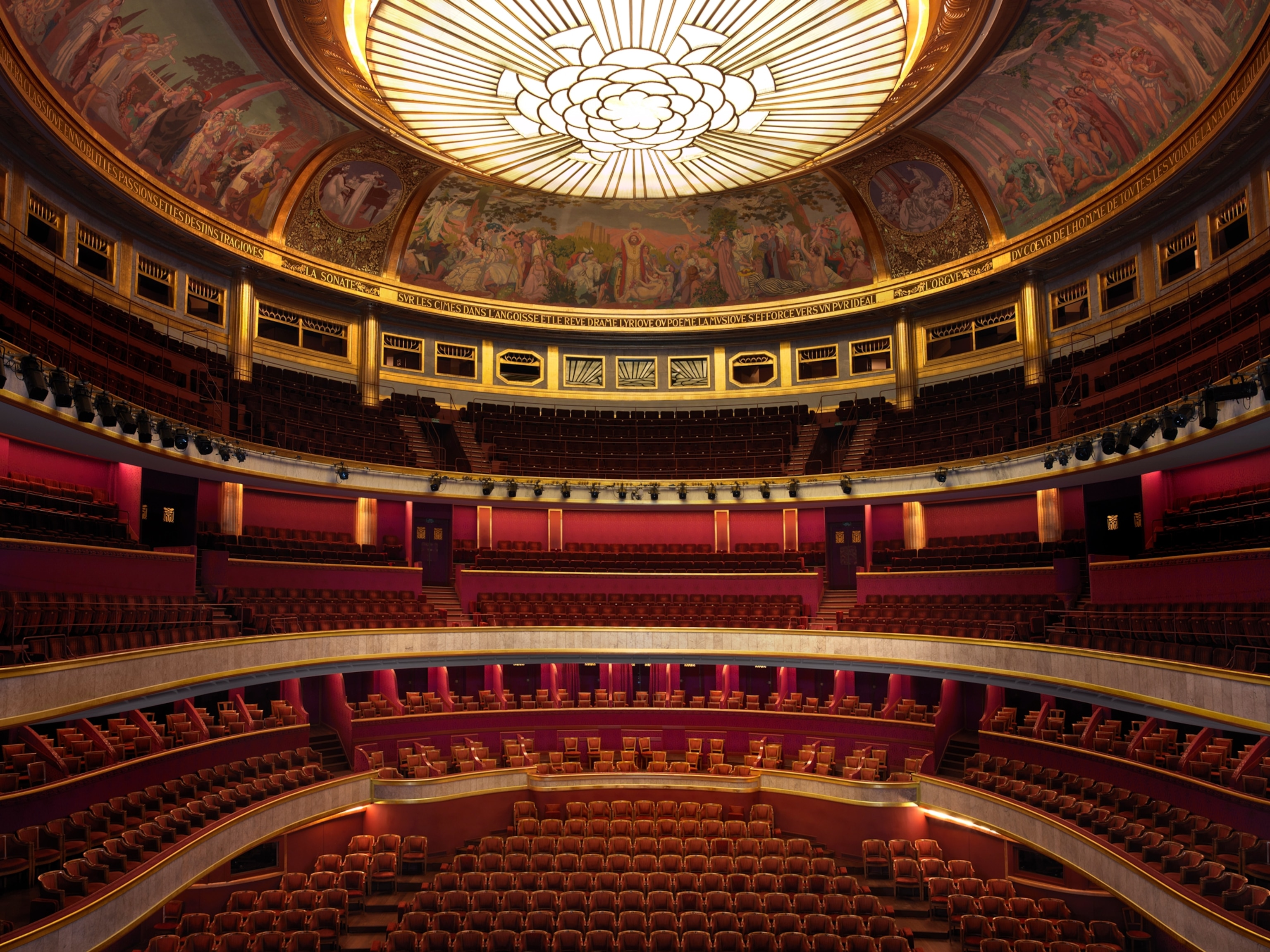Dog collar or slave collar? A Dutch museum interrogates a brutal past.
Under pressure from former colonies and activists, a storied museum is digging deeper into its collections for a fuller narrative.
When a finely engraved 17th-century golden collar was donated to the Rijksmuseum, the Netherlands’ national museum in 1881, it was labeled as a dog collar. But a few years ago, when the museum reexamined its collections for its recent exhibition on the Dutch slave trade, curators realized the beautiful object had an ugly past.
“If you take a good look at the paintings of that period and you look for those collars, you find them not on the necks of pets but on the necks of young African men,” says Valika Smeulders, head of Rijksmuseum’s history department and a curator of the Slavery exhibit, which can be explored online.
From the 17th to the 19th centuries, Dutch traders sold more than 600,000 Africans to buyers in North and South America and enslaved and sold between 660,000 and 1.1 million people from Asian territories.
Since the planning of the Slavery exhibition in 2017, curators have been reevaluating the incomplete stories behind some artifacts in the permanent collection at Rijksmuseum. This year, the museum—known for its world-class art treasures, including works by Dutch painters Rembrandt van Rijn and Johannes Vermeer—added a second information label to 77 items, putting each in a more accurate historical context. These will be displayed in parallel with the original labels for a year, before being integrated into future catalogs.
A similar reexamination is happening at cultural institutions throughout Europe. Some of these organizations, many founded during the colonial period, were filled with artifacts that were acquired illegally or unethically, their history largely whitewashed. Now, under pressure from former colonies, activists, and academics, a number of museums are exploring narratives that critically confront the colonial roots and legacies of their collections, and reimagine who should tell those stories.
Internal shift
The Rijksmuseum in Amsterdam, established in 1885, amassed its collection from the private holdings of the “well-to-do in society, those who had political power, those who had the economic means,” says Smeulders. “The most important period in our collection is the 17th century, which is the start of the [Dutch] colonial period.”
Surapati rebelled against the Dutch East India Company (VOC) in Java. Both Javanese and Europeans wrote about him. He inspired many to great deeds, and filled others with fear.
Originally from Bali, Surapati fled enslavement in Batavia and became the leader of a group of other Balinese runaways. Initially he fought in the service of the VOC, which, however, later declared him to be an enemy. Surapati succeeded in establishing his own court in East Java where, as a sovereign, he surrounded himself with allies. He died in 1707 from wounds he sustained in a battle with the VOC.
To this day he is still praised in Indonesia for his struggle against the Dutch. In 1975 he was proclaimed Pahlawan Nasional Indonesia (National Hero of Indonesia), the highest distinction an Indonesian can receive.
Text from an interpretive label near the painting explains the significance of Surapati, a figure often overlooked in the background of this family portrait., COURTESY OF RIJKSMUSEUM
The museum recognizes that it has been slow in addressing its history. “The colonial past and specifically slavery are a regular subject of debate in the public sphere,” Smeulders says. “Yet in education and museums, these subjects have been underrepresented.”
When the national museum celebrated the end of a 10-year renovation in 2013, it began taking a critical look at its collection and terminologies used in describing its artworks. That led to the removal of outdated or racist terms, such as “Negro,” from artworks’ titles, as well as the creation of a multimedia phone-based tour reexamining Dutch colonial history.
(What is colonialism and how did it arise?)
“The history of the Netherlands is international history, and our society is the legacy of that history,” says Smeulders, a specialist on underrepresented stories from Dutch slave history. Born in Curaçao, a former Dutch colony in the Caribbean that is still part of the Netherlands, Smeulders says that to properly tell the stories of a diverse society, museums need staff with varied cultural and professional perspectives, and change should not stop at exhibitions about race. “By making these changes permanent, the broad, diverse knowledge gets to be imbedded and used in all areas,” she says.
Conflicting narratives
Similar reflections are taking place at other institutions in Europe. In 2018, after a five-year overhaul, Belgium’s Africa Museum critically confronted King Leopold’s brutal occupation of the Congo. This marked an about-face for a museum that had previously portrayed colonization as having bestowed civilization and better welfare on supposedly savage peoples. Now, displays describe Belgium’s colonial history and how objects were acquired.
Some institutions, such as the German Museum Association, have set up guidelines to care for objects obtained by force or through unethical sales. The recommendations underscore that museums have a responsibility to provide access to the communities from which the artworks originated, including digitalizing archives so that other countries can easily locate lost objects. The guidelines also prioritize relationship-building with communities of origin to foster an exchange of views and greater knowledge about collection items, and detail how to handle artifacts that lack a clear provenance or were acquired through ethically questionable methods.
“These guidelines really helped to sensitize curators, conservators, and museum directors,” says Larissa Förster of the German Lost Art Foundation, which provides funding for museums to research the origin of their collections. Studying the provenance of artifacts forces institutions to become “aware of how they have become complicit with the project of colonialism,” she says.
But records from the colonial era detailing acquisition history can be difficult to come by, especially after the 20th century's two World Wars. When records do exist, they often were written by the people who appropriated the objects, leaving out the perspectives of those who originally possessed, created, or used them.
Adding to this ongoing work is longstanding battles over restitution, or the return of artworks or artifacts to the countries from which they were taken. The most famous example is the Parthenon Marbles (also known as the Elgin Marbles) at the British Museum, which were taken from Athens’ most famous landmark by Lord Elgin, the British ambassador to the Ottoman Empire, between 1801 to 1805. Greece wants them back, but the British Museum has refused, claiming that the marbles were legally acquired. Another is the bust of Nefertiti at the Neues Museum in Berlin, the subject of a repatriation campaign by Egyptian antiquities experts.
(Here’s how the British took the Parthenon’s Marbles.)
Many museums reject repatriation claims based on the concept of “universal museums,” a declaration signed in 2002 by leading museums across Europe and the United States, which asserts that objects have global values and that museums currently holding them can safeguard them for all humanity. (The declaration was originally made in defense of the British Museum’s position on the Parthenon Marbles). Critics argue that only people who visit those museums in Western cities such as London or New York have access to them.
Most efforts by countries to reclaim their treasures have been stymied, but there have been some successes for those favoring repatriation. In May, Germany announced plans to send hundreds of stolen pieces back to Nigeria, becoming the first country to agree to return Benin bronzes looted by British soldiers in the late 19th century. Soon after, the National Museum of Ireland pledged to do the same.
(The bronze Benin statues reignite debate over museum ownership.)
Restitution “is a way of redressing past injustices, repairing what is repairable,” says Förster. Museums around the world are “waking up and becoming aware of colonialism and its legacies.”
Public opinion
The public is becoming increasingly aware that these institutions are not always neutral temples of knowledge. But visitors can often feel overwhelmed by narratives presented, says art historian and author Alice Procter. “You go into a museum and these spaces are set up to make it feel like everything there is inevitable: This is the single story; this is the truth,” she says.
Before the pandemic, Procter organized independent tours at London museums, such as the British Museum, during which she talked about the colonial roots of Western art collections and taught visitors how to examine an exhibition’s labels. “Think about the language that’s used to describe places,” she says. “Do we talk about the places with their colonial names?”
The text that accompanies art and artifacts in museums sometimes mentions who donated the objects, but rarely how they were acquired. “What was going on behind the scenes…what was the power dynamic that enabled that person to collect,” Procter says. “How was this British man able to travel around India in the 1700s?”
Smeulders adds that, to make museums inclusive, visitors from all backgrounds should be able to see them as their own heritage organizations and not shy away from sharing their input. “Their stories should be part of it,” she says.
When the Rijksmuseum announced to the press in 2017 that it would organize the Slavery exhibition, members of the public chimed in with their ideas on what should be put in the show. “Lots of people approached us, wrote us emails, gave us their opinions,” Smeulders says.
The museum also allowed a film crew to follow them throughout the exhibition's planning. The resulting documentary, New Light, was broadcast on national television this year. “Everybody got to see how we questioned each other, how we struggled with what should we put into the exhibition,” she says.
Using public input, the Rijksmuseum presented the stories of 10 individuals, including enslaved people, those who enslaved them, and individuals who gained their freedom. An audio tour of the exhibit is narrated not by curators, but by direct descendants or others who share a similar history. Smeulders says in this way museums are not only expanding their narratives to include colonial legacy but also presenting history “so it’s clear that it was not ancient past, that people still feel the legacy of that history in their everyday lives.”
Ye Charlotte Ming is a journalist based in Berlin. She writes about culture, history, and photography.
